Top Ten Things To Do In Winnipeg, Manitoba
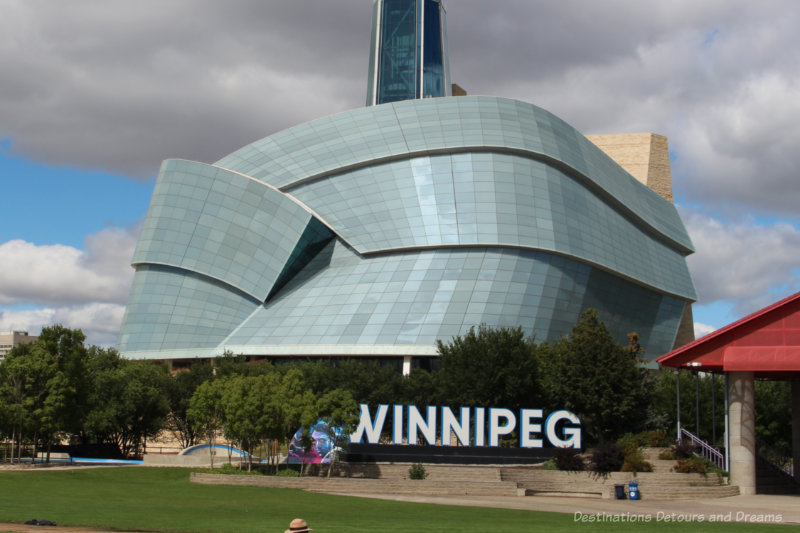
Top-rated attractions and things to do in Winnipeg, Manitoba, Canada
Winnipeg, Manitoba, Canada is a multicultural city with historic neighbourhoods, world-class museums, interesting architecture, top-notch restaurants, and a friendly, welcoming spirit. “The Peg” has long been a major cultural centre of the Prairie Provinces. The city of just over 800,000 people is the capital of Manitoba and home to about half of the province’s population. It is a cosmopolitan city with a small-town feel.
Winnipeg was voted one of the top 19 places to visit in 2019 by Airbnb and rated one of the 21 best places to go in 2021 by Conde Nast Traveler.
Winnipeg was incorporated as a city in 1873, but its history goes back much further than that. Winnipeg is located on Treaty 1 territory, the traditional territory of the Anishinaabeg, Cree, OjiCree, Dakota, and Dene Peoples, and on the homeland of the Métis nation. It was an trading centre prior to the arrival of the Europeans and at the heart of the Canada’s fur trade. With the arrival of the railroad in 1885, Winnipeg became a transportation hub, the gateway to the west. Surrounded by rich agricultural land, it was home to an historic grain exchange. Today, it continues to welcome immigrants from around the world and has a diversified economy.
Summer is prime tourist season. Temperatures are pleasantly warm and humidity usually stays around 50%. There are a number of seasonal attractions and tours which operate only in the summer. Although winter in “Winterpeg” is cold, occasionally brutally so, visiting in winter offers attractions such as the world’s longest naturally frozen skating trails, the world’s largest snow maze (located just outside the city), western Canada’s largest winter festival, an active performing arts season, and a variety of winter outdoor activities.
No matter what season, you’ll find an abundance of sunshine. According to World Atlas, Winnipeg experiences 316 bright sunny days a year. In the summer those sunny daylight hours extend until 9:30 pm or later. In winter, twilight begins around 5 pm.
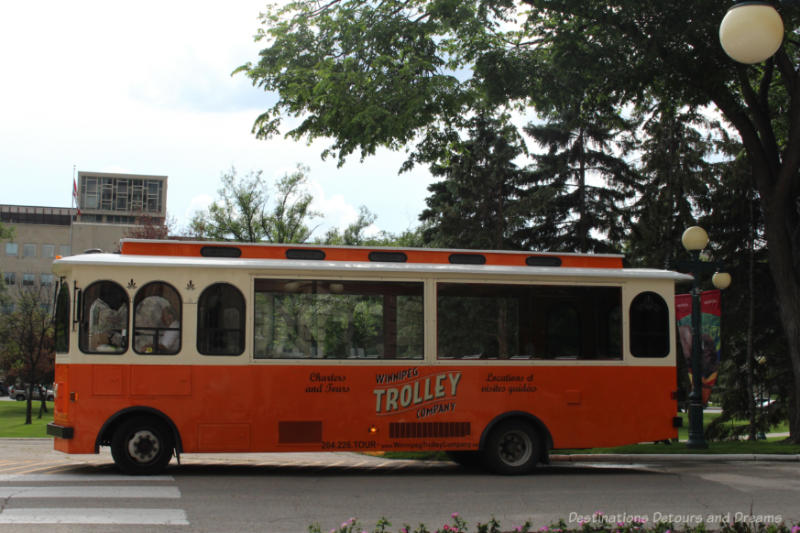
I have lived in Winnipeg for decades. When not travelling, I explore my hometown with a traveller’s curiosity. Following is my take on Winnipeg’s top 10 attractions. To get a general overview of the city before or after visiting specific attractions, take the Heart of a Nation city trolley tour or use the Loop walking guide to take you past the city’s major landmarks.
1. The Forks
Located at the junction of the Red and Assiniboine Rivers in downtown Winnipeg, the Forks is a top city attraction for tourists and locals. The site has been a meeting place for over 6,000 years. Archaeologic evidence shows indigenous activity thousands of years in the past. The site was a hub of the fur trade era. The genesis of today’s meeting place began in the late 1980s. Development over the years since then has created a vibrant area of culture and entertainment within a 54-acre site. The Forks is home to restaurants, shops, and museums. It hosts concerts, events, and festivals.
The main floor of the Forks Market contains a fresh food emporium offering treats to take home or eat on site and The Common kiosk offering craft beer and wine. Specialty shops are found on the second floor. The Johnston Terminal, a former cold storage railway warehouse, houses unique shops and food outlets. The Market Plaza and Canopy between the two buildings is the site of open-air performances in the summer and a skating rink in winter. The Plaza and green space leading to the river is one great patio area for outdoor dining and visiting.
The Forks National Historic Site is a Parks Canada riverside park with signage documenting the years of human history at the site. Within the total Forks site, you’ll find green spaces, picnic tables, pieces of art, an amphitheatre, a performance stage for outdoor concerts, a skateboard park, a children’s playground, and a native prairie garden. There is also a hotel, the Children’s Museum, the Theatre for Young People, and the Canadian Museum for Human Rights.
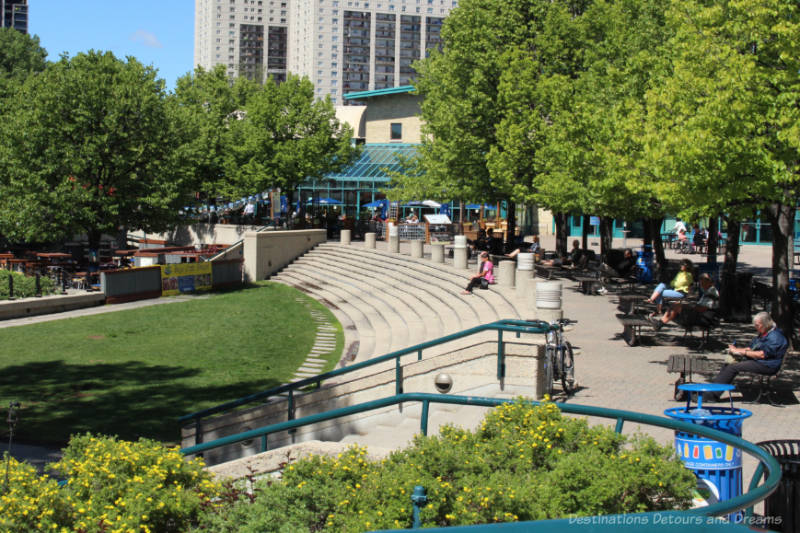
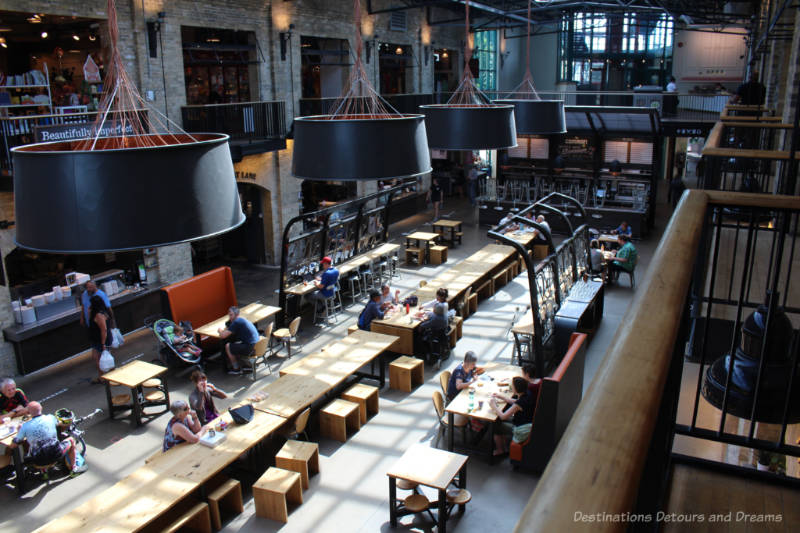
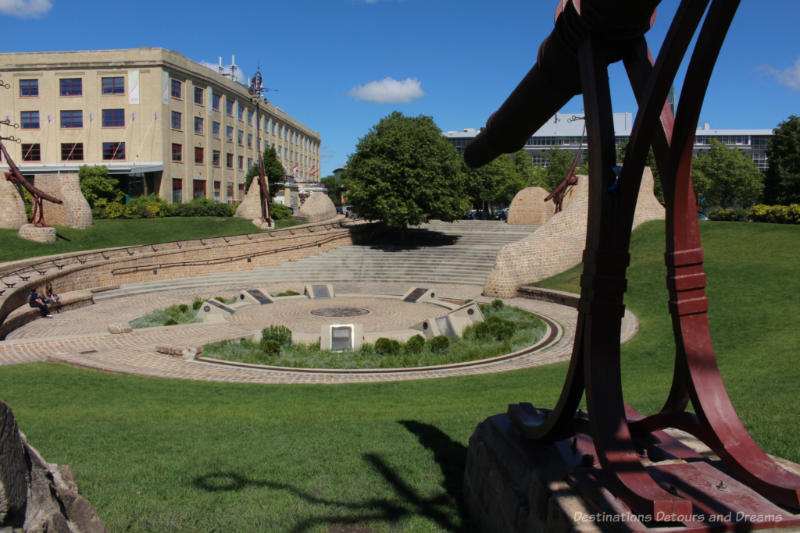
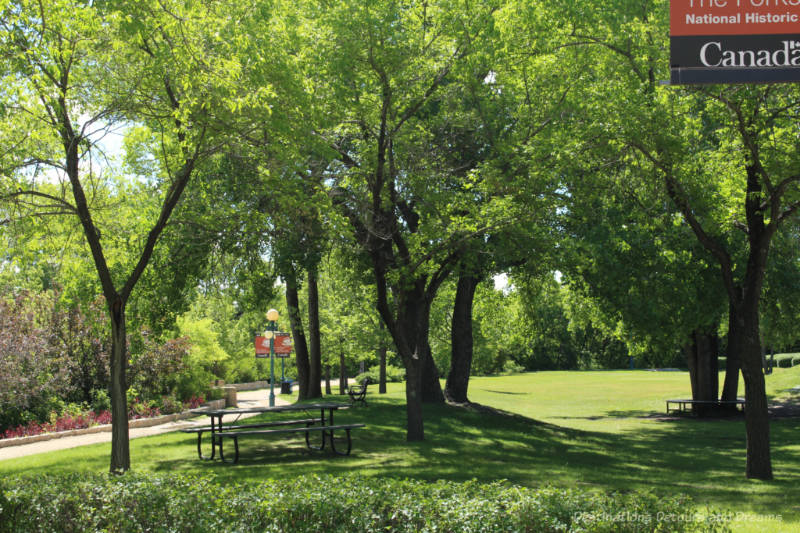
The Travel Manitoba Centre is also located at The Forks. The tourism office is a good spot to pick up brochures to help you with your exploration of Winnipeg or talk to a tourism representative about things to see and do in the city and the entire province.
For more about The Forks, see my post Meet Me At The Forks In Winnipeg.
2. Canadian Museum for Human Rights
Since opening in 2014, the Canadian Museum for Human Rights (CMHR) has become a Winnipeg landmark and top tourist attraction. Eleven galleries explore the meaning and history of human rights in Canada and around the world. Included in the galleries are a timeline of human rights events and issues, a look at Canadian indigenous perspectives, stories of the steps and missteps in Canada’s human rights history, examination of the Holocaust and other genocides, thought-provoking exhibits on our own role in contemporary human rights, examples of human rights triumphs, and a focus on people who have made a difference. In addition to the regular galleries, special exhibitions highlight human rights stories from around the world. The serious topics covered in the museum encourage reflection and discussion, but the overall message is one of hope and being spurred to action.
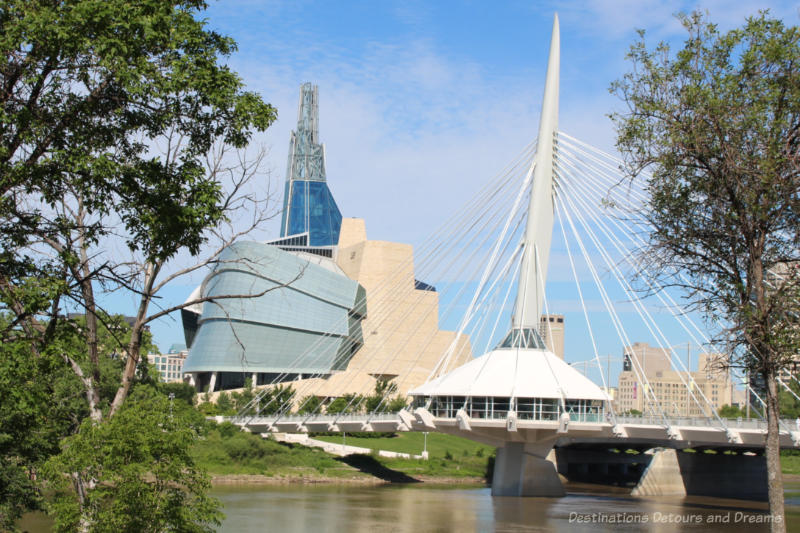
Designed by Antoine Predock, the building’s architecture is part of the visitor experience. The structure, located at the edge of The Forks site, embodies part of the Canadian landscape with large limestone “roots” creating a “mountain” which is surrounded by a cloud of over 1,500 panes of custom-made glass and topped with an icy peak. The cloud also represents the wings of a dove embracing the building beneath a beacon of hope. Inside alabaster lined ramps lead the visitor upward through the galleries where ever increasing levels of light symbolize the journey from darkness to light. The Tower of Hope offers panoramic views of the city.
There is also a restaurant in the museum and an excellent gift shop. For more information, visit the museum website or read my Canadian Museum for Human Rights Guide.
3. The Exchange District
The Exchange District, a 20-block area in central Winnipeg, was the original centre of commerce and culture in the city. It is now a National Historic Site and boasts North America’s largest and best-preserved collection of heritage buildings along narrow angled and cobblestoned streets. Stone and brick warehouses and terracotta-clad buildings date from the period of 1880 to 1920, when Winnipeg was known as “Gateway to the West” and “Chicago of the North.”
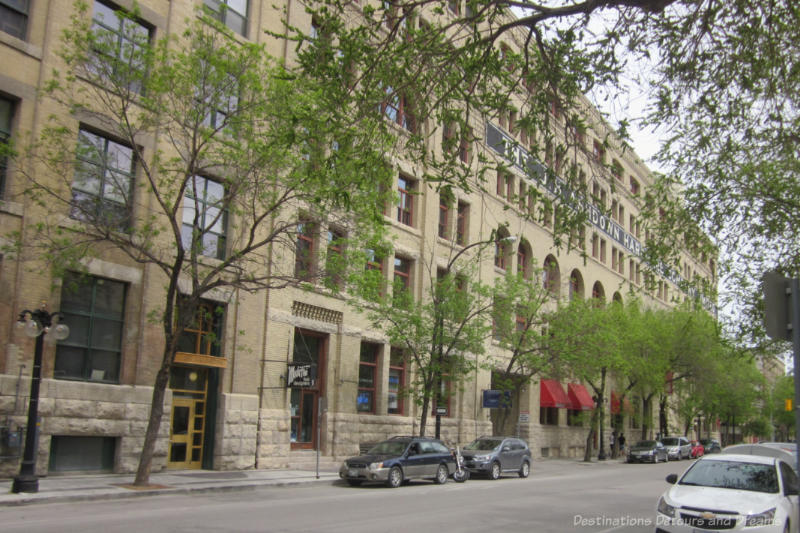
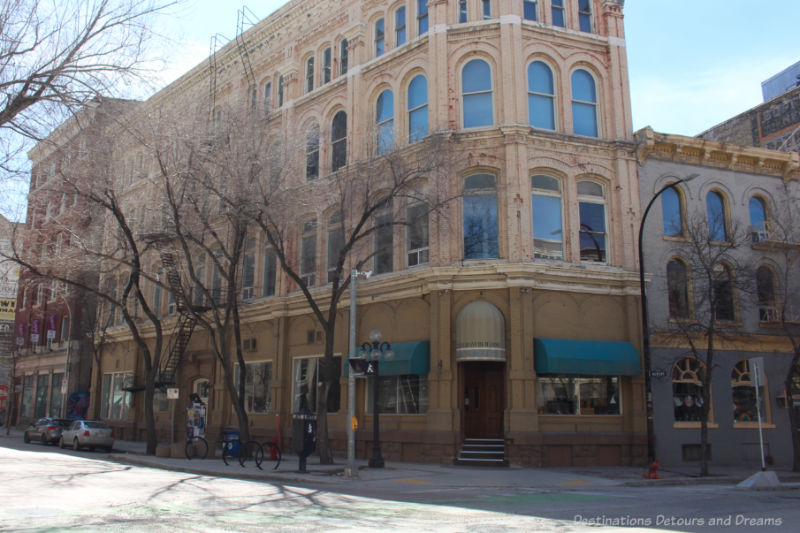
Today, the district bustles with local restaurants, boutique shops, art galleries and studios, museums, and other attractions including Old Market Square, an urban green space that is home to some of Winnipeg’s most popular summer festivals. It is one of my favourite areas of the city.
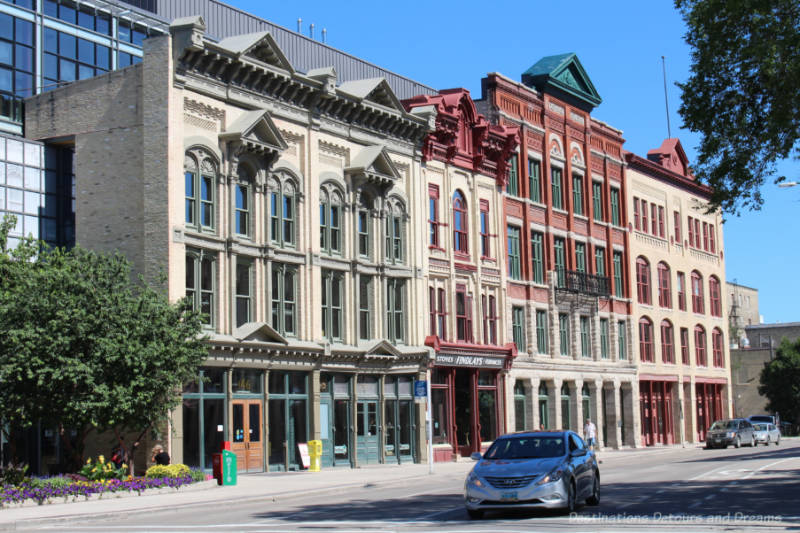
While you can have an enjoyable time wandering through the area on your own, taking in the architecture, visiting shops, lingering in restaurants and cafés, I recommend taking a guided tour if you can. The Exchange District Biz offers a variety of themed tours focused on the history of the area as well as food tours which give you a sampling of restaurants in the area. The tours run primarily through the summer months, but may also be available in off-season (September to May) depending on weather and tour guide availability. Contact the Exchange District Biz to find out if you might be able to take a tour in the off-season. Self-guided audio tours can be found here.
For more information on what can be found in the Exchange District, its tours and events, check the Exchange District Biz site. If a festival coincides with the time of your visit, you’ll find the Exchange abuzz with excitement and activity. One regular event of note is First Fridays, held on the first Friday of the month, when a number of studios and galleries are open to the public. You’ll have the opportunity to talk directly with artists.
4. French-Canadian Culture and History
Winnipeg is home to the largest Canadian francophone community west of the Great Lakes. The core of that community is St. Boniface, known as Winnipeg’s French Quarter. Located across the river from The Forks, St. Boniface was its own city until 1972 when Winnipeg amalgamated with many neighbouring communities. Tourisme Riel offers guided walking tours in the summer. Alternatively, you could take a self-guided tour with this map.
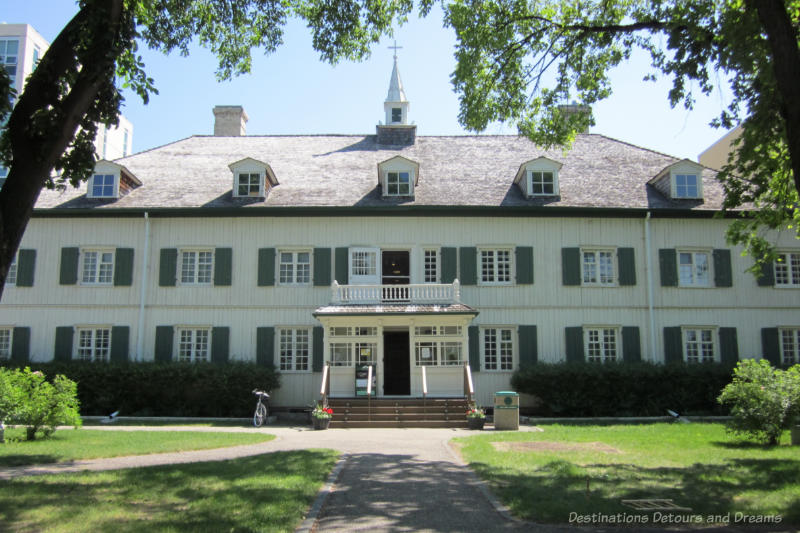
My top recommendation for what to see in St. Boniface is the Saint Boniface Museum. Housed in a former Grey Nun’s convent built between 1845 and 1851, the museum showcases voyageurs, early French-Canadian life in the area, and the development of the Métis nation. Voyageurs were French Canadian men who transported furs by canoe during the fur trade era. Many of the voyageurs married First Nations women. Their descendants formed a distinct culture and nationhood. The Métis are a recognized Canadian aboriginal people. Louis Riel, a Métis man born in St. Boniface, played a significant role in Canadian prairie history and is known as the “father of Manitoba.” The complex history of this controversial man has a prominent spot in the St. Boniface Museum. For more information about the museum, visit its website or read my post about the museum. I’ve also written a post about discovering Louis Riel in Winnipeg.
More can be learned about the life of the voyageurs and the fur trade at Fort Gibraltar. Fort Gibraltar is a replica of a fur trading post originally built in 1809. The replica recreates life in the time period 1815 to 1821 through reconstructed buildings and costumed interpreters. Fort Gibraltar is open during the summer months and for 10 days in February when it becomes the centre of Festival du Voyageur, a winter festival celebrating French-Canadian culture and the history of the voyageurs and Métis and First Nations peoples. For more information, visit Fort Gibraltar’s web site or read my article Voyageurs and the Fur Trade Era at Fort Gibraltar in Winnipeg, Manitoba.
For more information about exploring French-Canadian culture and history, including other sites such as Louis Riel’s grave, the façade of a 1908 cathedral, the Archbishop’s House, and author Gabrielle Roy’s house, as well as information about experiencing French-Canadian food, read my article Discover French-Canadian Culture and History in Winnipeg, Manitoba.
5. FortWhyte Alive Nature Preserve (and a Bison Safari)
FortWhyte Alive, a 640 nature preserve in southwest Winnipeg, offers a pleasant way to spend time in nature while learning more about the Manitoba landscape and wildlife. Hike or cycle through forest trails in the summer as you look for wildlife, listen to the birds, spot wild flowers, and smell the freshness of the outdoors. You can hike, cross-country ski, or snowshoe the trails in winter. Along the way you’ll encounter exhibits, such as a sod house and tipis, highlighting the lives of early settlers and inhabitants. Walk on a floating boardwalk through swampland. Stroll through a biodiversity garden. Lakes are stocked with Manitoba fish and are open to year-round catch and release fishing. You can sail, kayak, or canoe on the lakes in summer, and skate in winter.
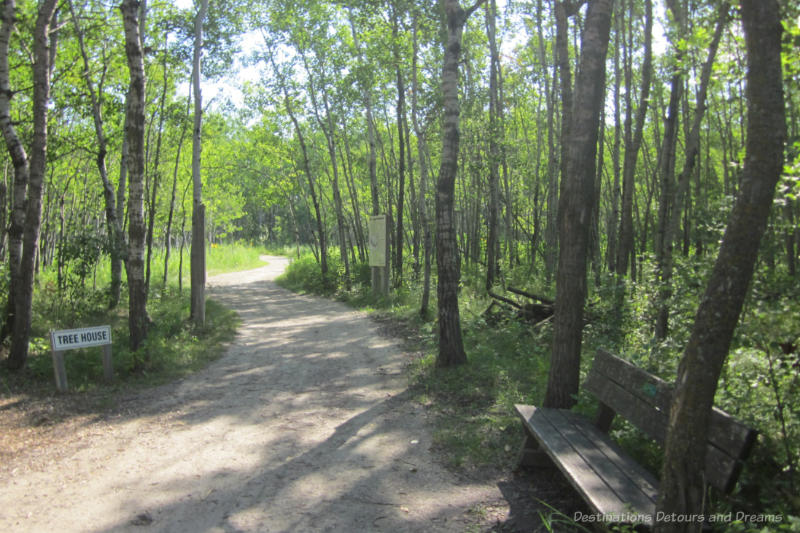
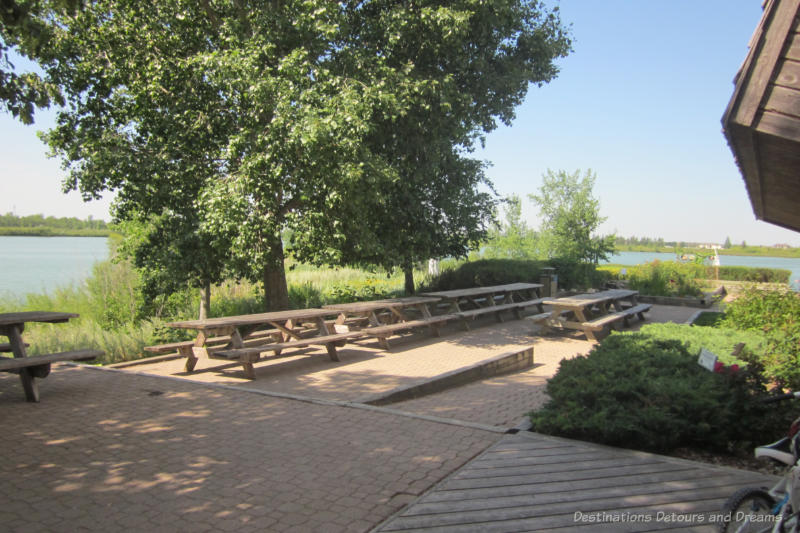
Indoor exhibits include an aquarium with local freshwater fish, a burrowing owl and prairie dog exhibits, several dioramas and the Touch Me museum of mounted wildlife.
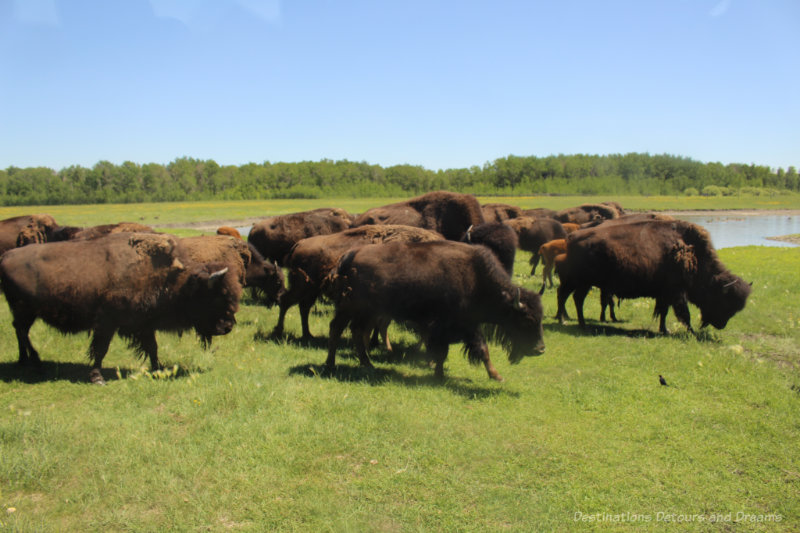
FortWhyte Alive keeps a small herd of bison. You may catch a glimpse of them from the bison lookout site along the trail, but I recommend taking one of their hour-long bison bus safaris for a unique experience of getting up close to the bison herd. FortWhyte Alive offers a variety of other tours and seasonal events, including the spectacular fall Sunset Flights in which you watch thousands of geese flock in and land on the lakes for the night.
FortWhyte Alive has a restaurant and gift shop. For more information, visit the FortWhyte Alive website. I’ve also written more detailed posts about FortWhyte Alive: FortWhyte Alive in summer, FortWhyte Alive in winter, and Bison Safari on the Canadian Prairie. Note that the Bison Safari is one of the places featured in my book 111 Places in Winnipeg That You Must Not Miss.
6. Manitoba Museum
The galleries within the Manitoba Museum showcase the interrelationship of human beings and the natural environment within Manitoba through collections of artifacts, written and audio information, dioramas, and interactive displays. You’ll find geological and historical information about Manitoba’s distinct ecosystems (Arctic/Sub-Arctic, Boreal Forest, Parklands, and Grasslands). You’ll find Indigenous stories, early settlement and immigration information, a gallery focused on the Hudson’s Bay Company which was chartered in 1670 as a fur trading business and had an incredible impact on Canadian history, a replica of the 1650 merchant ship the Nonsuch, and a gallery recreating the streets of 1920s Winnipeg (this is a personal favourite part of the museum). You can read more about the museum in my post Man and Nature in Manitoba Museum Galleries.
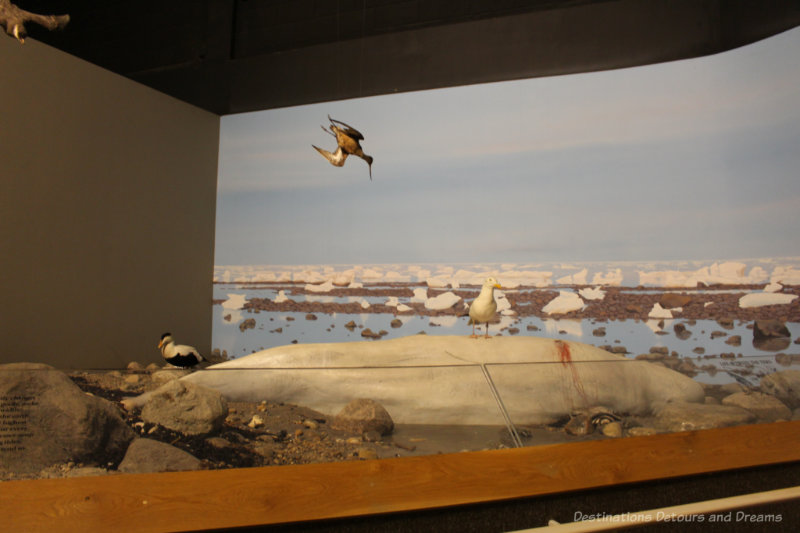
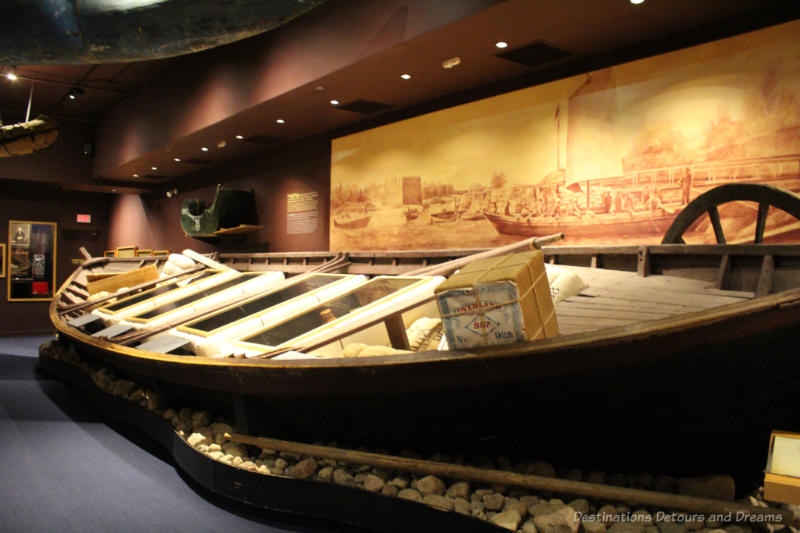
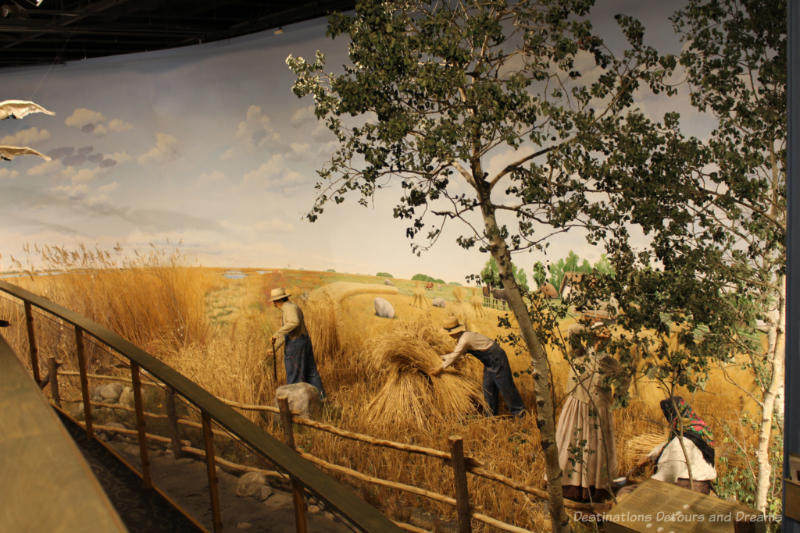
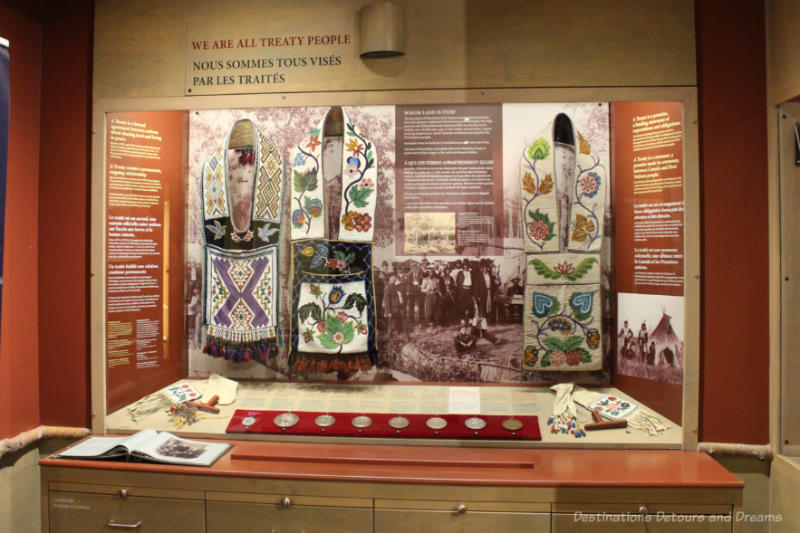
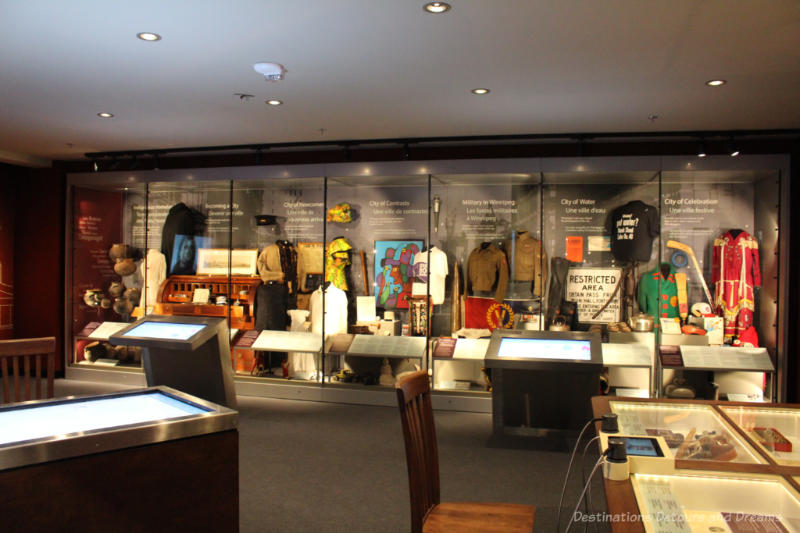
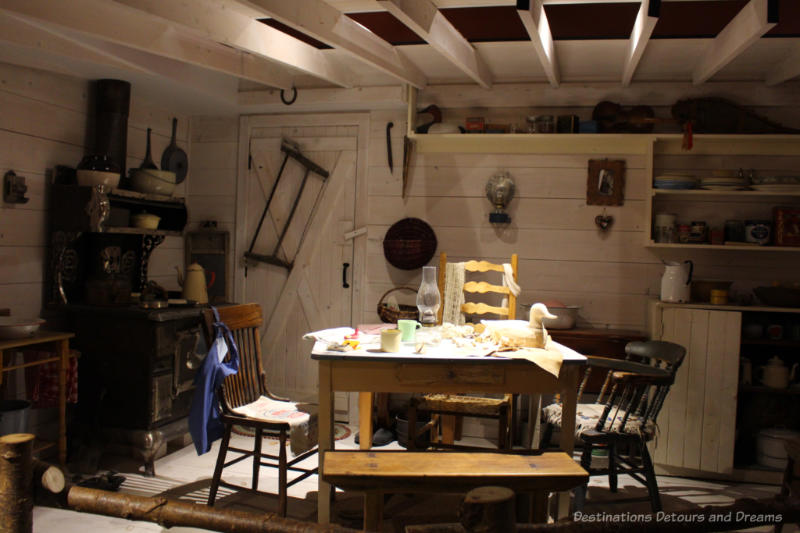
There are actually three parts to the Manitoba museum: the galleries mentioned above, a planetarium, and a science gallery. You can purchase tickets to see all three in one visit or purchase tickets for each one individually. Visit the museum website for more information.
7. Manitoba Legislative Building And Its Hermetic Secrets
The Manitoba Legislative Building, which houses the provincial legislative assembly, its committees, and staff, is a Beaux-Arts-Classical building constructed with local brick and stone between 1913 and 1916. The exterior is adorned with many allegorical works of art celebrating wisdom, justice, and courage. The Golden Boy statue on top of its dome symbolizes Manitoba’s youth and progress. Inside, you’ll find ornate decorative touches full of symbolism everywhere you look.
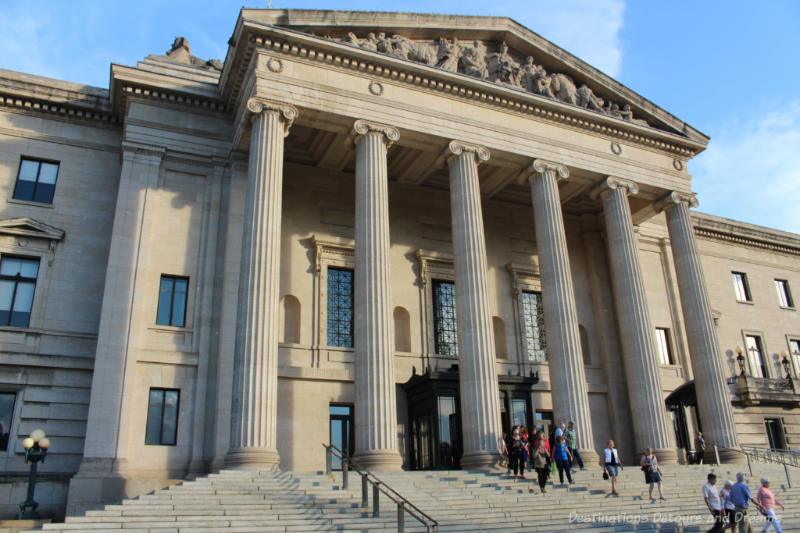
The first thing that catches your eye when you enter is the Grand Staircase. Made of Italian marble and featuring 39 steps in 3 groups of 13 steps each, it makes an impression. The Rotunda features a marble floor with a Grecian key design symbolizing the eternal quest for knowledge. It also offers views of the magnificently decorated dome above it and the Pool of the Black Star below it. The Pool of the Black Star contains a design symbolic of Greek altars and unique acoustics. The building houses Canada’s only circular legislative chamber. Pool of the Black Star is one of the places featured in 111 Places in Winnipeg That You Must Not Miss.
Symbolism in the elaborate building is drawn from ancient Greek, Roman, and Egyptian cultures. Architectural historian Dr. Frank Albo saw deeper meanings. Intrigued by the two sphinxes on the exterior, he conducted years of research. In 2007, he published the book The Hermetic Code: Unlocking One of Manitoba’s Greatest Secrets about the Masonic roots of the Legislative Building.
Whether you look for Masonic symbols, interpret the Greek, Roman, and Egyptian symbols, or simply admire the beautiful designs, the Manitoba Legislative Building is impressive to see. See the building website for visiting and tour information. Make sure you also take time when visiting to walk around the beautifully landscaped grounds and see the many statues.
8. The Winnipeg Art Gallery and Qaumajuq
The internationally recognized Winnipeg Art Gallery (WAG) is Canada’s sixth largest gallery. Established in 1912, it is Canada’s oldest civic gallery. There are over 25,000 works in its own permanent collection and it regularly hosts temporary exhibitions featuring local, national, and international artists.
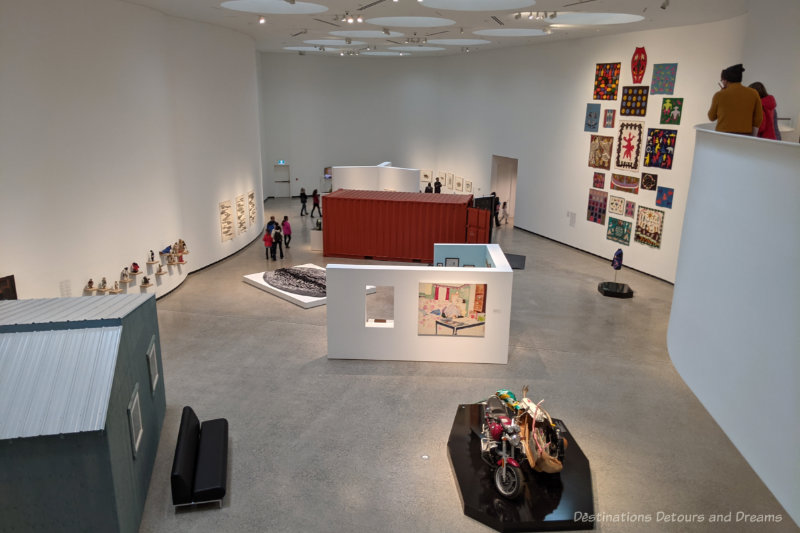
The WAG also holds the world’s largest collection of contemporary Inuit art with a collection of more than 14,000 artworks. While some of the pieces have been displayed in its permanent galleries or have been featured in special exhibitions, much of the collection remained in storage until the opening of the WAG’s new Inuit art centre in March 2021. Connected to the existing WAG building, the new gallery is named Qaumajuq which means “it is bright, it is lit.” The 40,000 square foot Qaumajuq has four levels with bridges at each level connecting it to the WAG building.
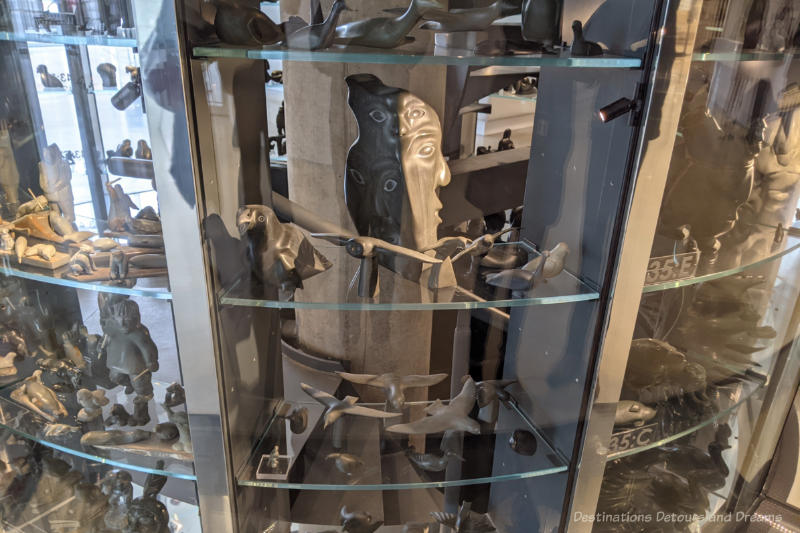
The WAG also has an excellent gift store in its building and another store in the Johnston Terminal at The Forks. Read my posts The Winnipeg Art Gallery and Qaumajuq: Illuminating The Largest Collection Of Inuit Art In The World. Visit the Winnipeg Art Gallery web site for details on current exhibitions and visitor information. Qaumajuq is one of the places featured in 111 Places in Winnipeg That You Must Not Miss.
9. West End Murals
There are over 600 murals located throughout the city of Winnipeg. The West End neighbourhood boasts a high concentration of those murals. The West End is not found as its name might suggest in the far western reaches of the city, but rather is centrally just west of the city’s downtown. At one time it was the western edge of the city before Winnipeg amalgamated with surrounding communities. It is an ethnically-diverse neighbourhood. It developed as a working-class and middle-class residential area in the late 19th century. It has been the first home of many immigrants. Many Winnipeg families have roots in this neighbourhood. The murals tell the stories of history, culture, and personalities of the West End.
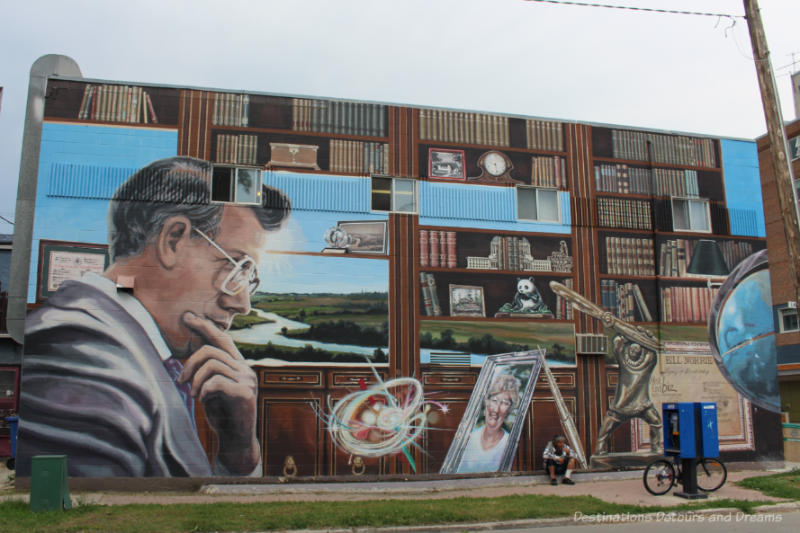
In the summer months, the West End Biz offers walking tours that explore some of the top murals. I wrote about the walking tour I took in 2020 in the post Mural Tours in Winnipeg’s West End. and highlighted additional murals in More Winnipeg West End Tours.
If you are interested in finding out more about other murals throughout the city, check out the Murals of Winnipeg website.
10. Journey To Churchill Exhibit At Assiniboine Park Zoo
The Journey to Churchill exhibit at the Assiniboine Park Zoo highlights the magic of the north. The Arctic seaport of Churchill, located at the western edge of Hudson’s Bay in northern Manitoba, is a remote tourism spot for seeing beluga whales, polar bears, and northern lights. The zoo exhibit recreates the town with a replica townsite, landscape, and collection of sea and land life. Highlights are the polar bears, all rescues, who can be observed in fenced-in-fields or in the water from an underwater viewing tunnel. You can also view swimming Arctic seals through a glass panel. The exhibit contains a wealth of information about the wildlife. The Borealis Theatre screens a short film about Churchill and the four seasons as seen through the eyes of an indigenous family ending with a fabulous Northern Lights display. At the Leatherdale International Polar Bear Conservation Centre, a state-of-the-art rescue and transition facility, you can learn more about polar bears and conservation and rescue efforts. My post on the Journey to Churchill exhibit contains more information and a number of photographs.
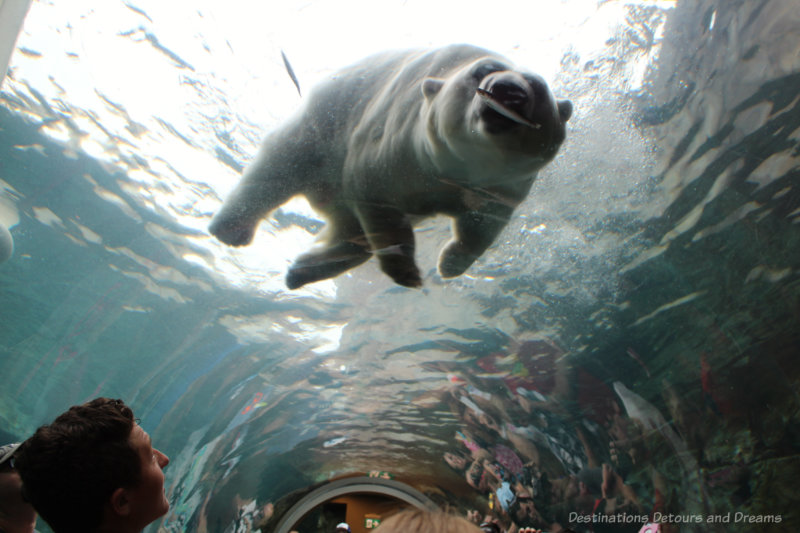
Entrance to the Journey to Churchill exhibit is included in zoo admission. You may wish to tour other parts of the zoo while there. Bison, deer, Canadian lynx, camels, yaks, kangaroos, and monkeys are just a few of the animals in the zoo’s collection. There are also reptiles and amphibians, fish, and birds. See more in my post about Assiniboine Park Zoo. Find more information about the Journey to Churchill exhibit in my Journey to Churchill post.
For more details about the zoo and visiting go to the Assiniboine Park Zoo website.
11. The Leaf
Winnipeg keeps getting better and better. I’ve had to extend the top 10 to the top 11.
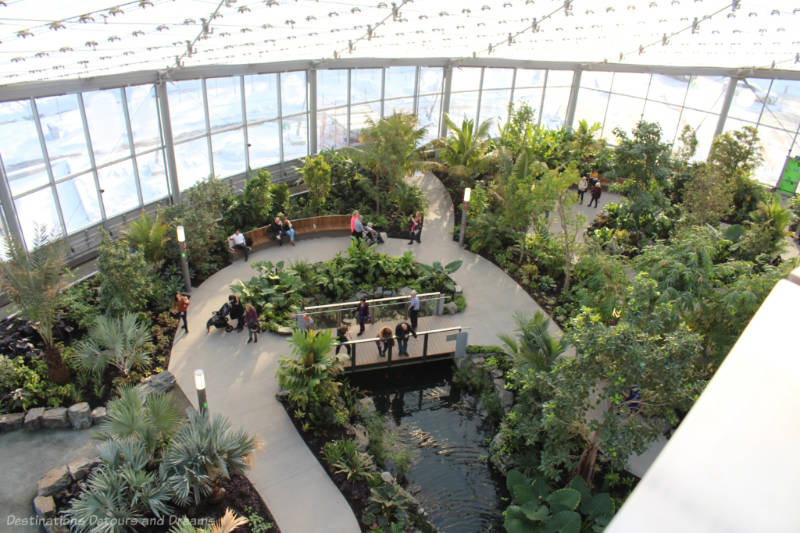
Housed inside a stunning building with a translucent roof unfurling like an opening blossom, The Leaf in Assiniboine Park is a conservatory with indoor gardens. Here you’ll find four distinct biomes: the Hartley and Heather Richardson Tropical Biome, Mediterranean Biome, Babs Asper Display House, and the Shirley Richardson Butterfly Garden.
Outdoor gardens at The Leaf comprise nearly 30 acres and have a central theme of celebrating cultural and biodiversity. The six areas within the space are: Indigenous Peoples Garden, Kitchen Garden, Sensory Garden, Performance Garden, Seasonal Garden, and The Grove.
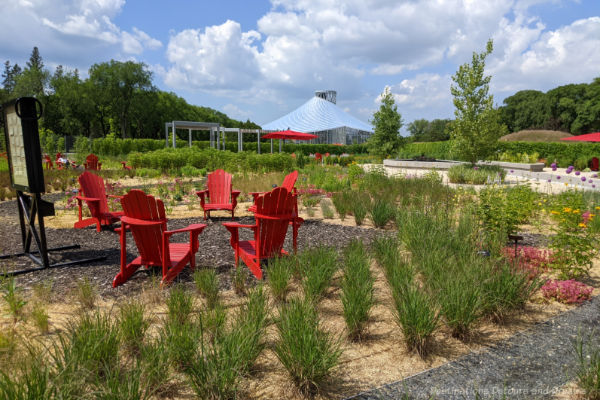
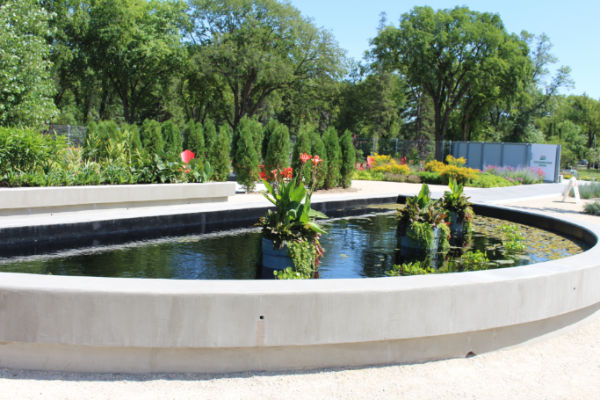
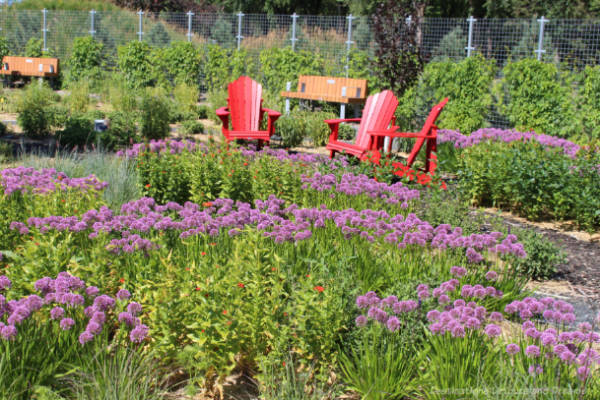
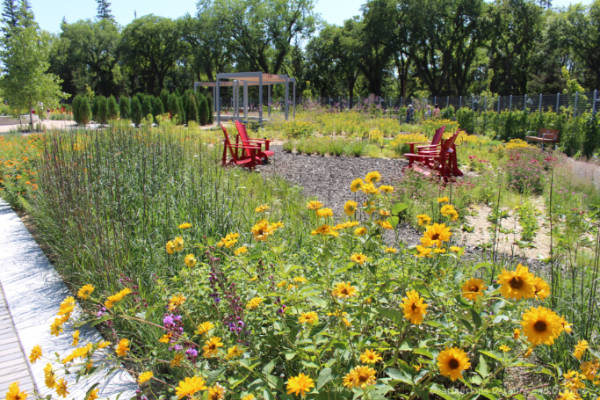
Read more in more posts The Leaf Tropical Gardens In Winnipeg and The Leaf: Indoor Tropical Garden In Winnipeg.
Note that there are several other attractions at Assiniboine Park worth visiting: the Leo Mol Sculpture Garden, the English Garden, Nature Playground, and Pavilion art galleries.
And Still More Things To Do
There is a lot more to see and do in Winnipeg beyond these top attractions. Read the post More Things To Do In Winnipeg, Manitoba.
Never miss a story. Sign up for Destinations Detours and Dreams free monthly e-newsletter and receive behind-the-scenes information and sneak peeks ahead.
PIN IT
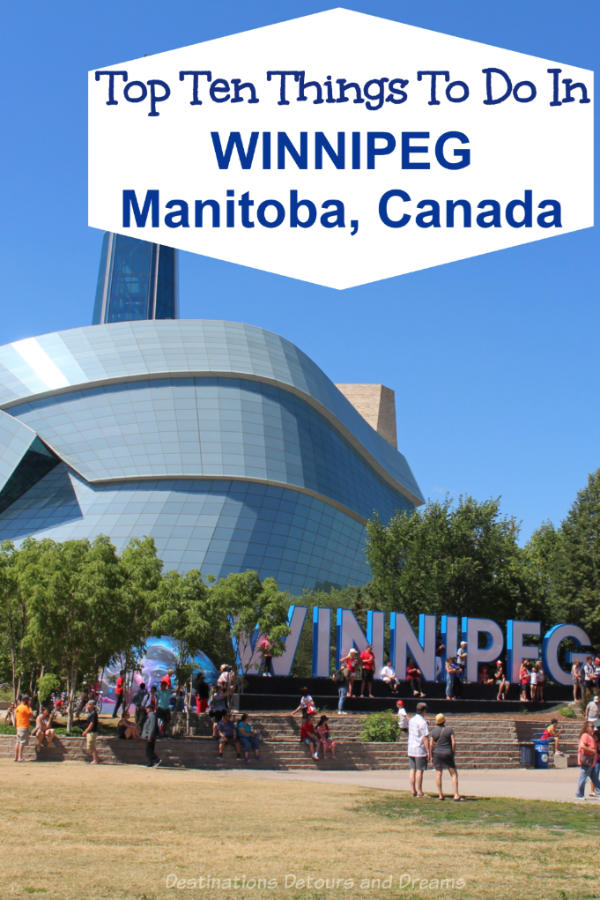

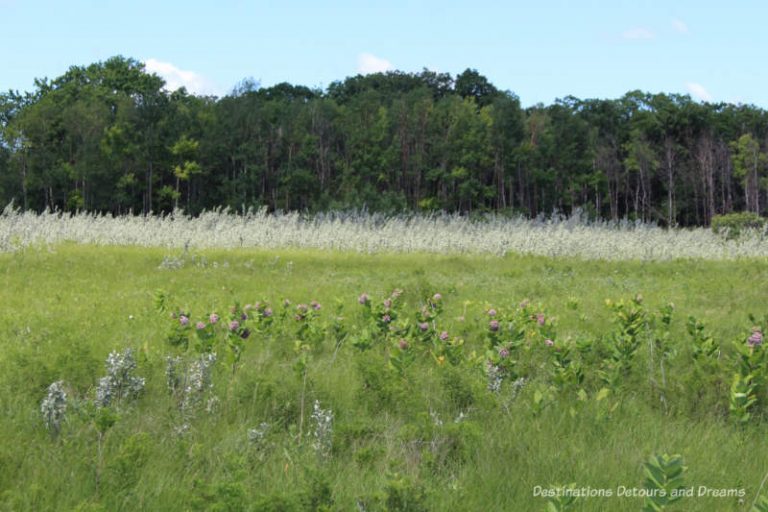
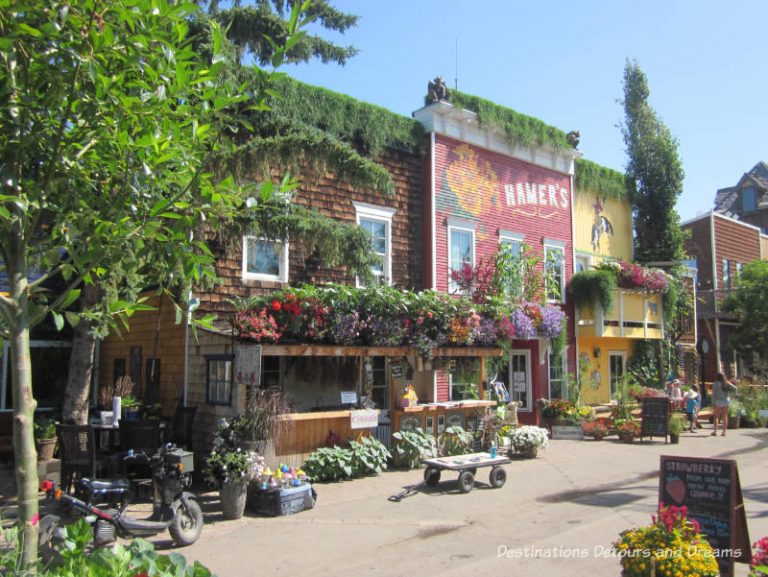
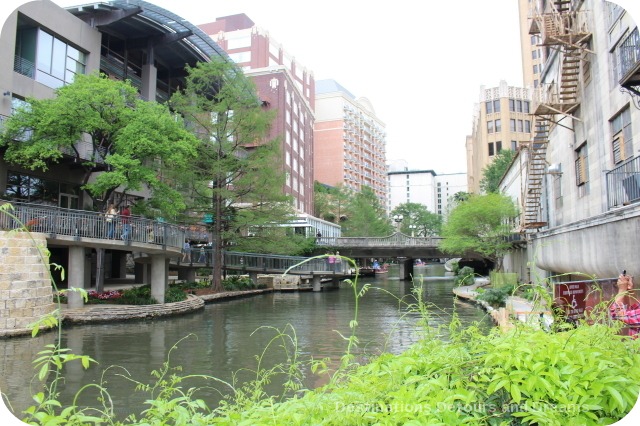
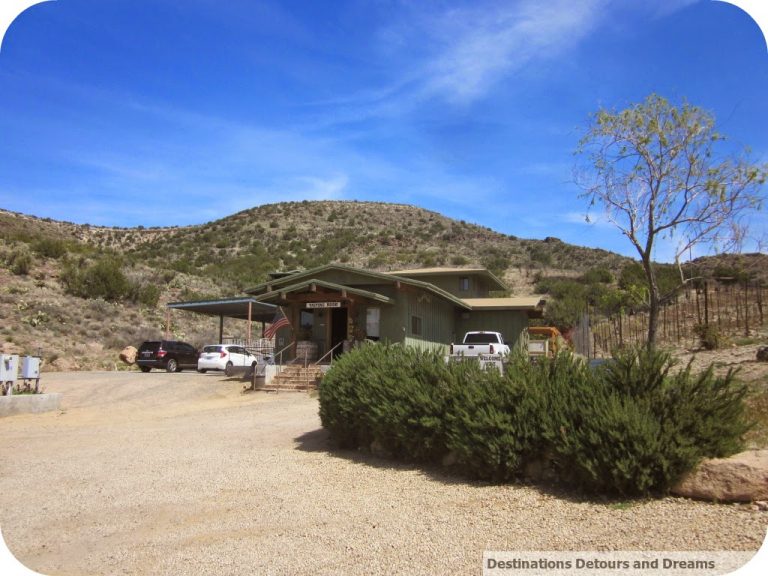
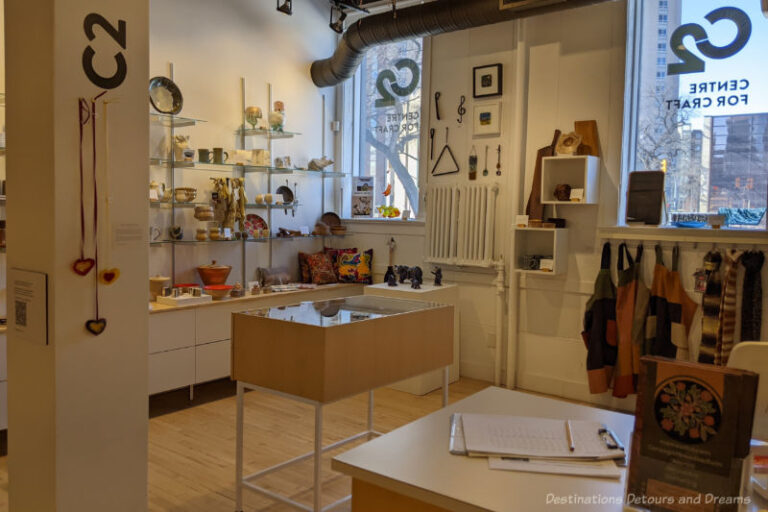
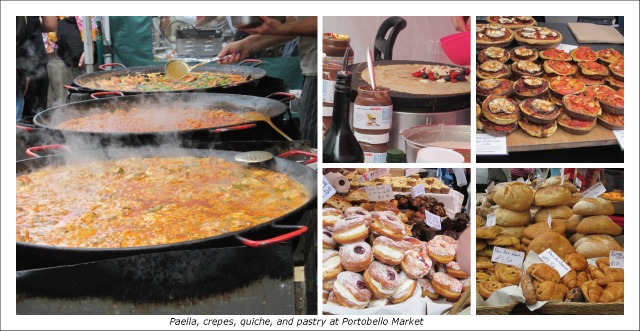
Hope to get there someday Donna. All of these things look really interesting.
Ken, there is a lot to see and do In Winnipeg. I’m sure you’d find things of interest. if you do make it here perhaps we’ll have a chance to meet in person.